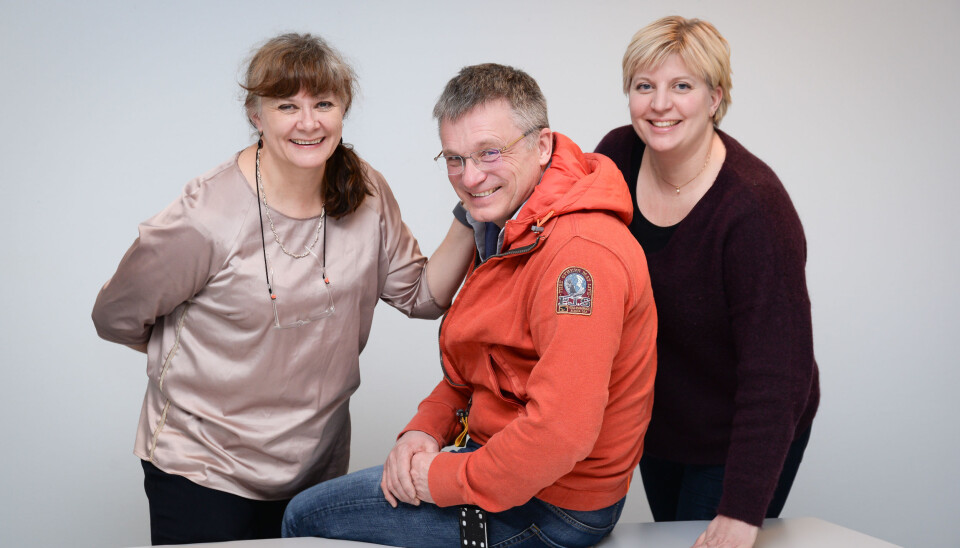This article was produced and financed by Norwegian centre for E-health research - read more

Mortality decreased among sick elderly patients after better coordination of health services
When health workers coordinated a person-centred and integrated health service around individuals, mortality among elderly, multi-morbid patients decreased by 43 per cent. For the most frail, ordinary health and care services can be life-threatening.
“Had a study of a new drug shown such a large difference in mortality with and without a new medicine, the study would have been discontinued and all patients would have received the medicine. Ethically, it would have been unjustifiable not to offer patients something that saved lives,” says professor Gro Rosvold Berntsen at the Norwegian Centre for E-health Research.
Together with colleagues at E-health Research and the University Hospital of North Norway, she designed the Patient-Centred Team (PACT) intervention. This service improves the lives of the weakest and most resource-intensive patients.
Lacks whole person focus
Western health services are doctor- and diagnosis-centred. It is designed for the patient to be able to go see a doctor, and then be treated for one illness at a time.
Most patients who have more than one disorder at the same time have experienced that they have to coordinate their health services between different treatment options and levels.
According to health statistics, the vast majority of us have at least three diagnoses when we turn 75 years old.
“We know that the health service today spends about two thirds of its resources on 10 per cent of the patients. In these 10 per cent, we find many frail elderly with complex needs. Such patients have a special need for an integrated health service where all actors communicate well with each other,” says Berntsen.
“The ordinary Norwegian health services have problems with the information flow between different service levels and lack holistic thinking. Our health system lacks a whole person focus. We have fantastic health workers who do their utmost, but the system is full of gaps,” she underlines.
‘Revolving door’ patients
For decades, hospitals have referred to the most resource-intensive patients as ‘revolving door’ patients, because they are so often admitted to emergency care.
To overcome the challenge, the University Hospital of North Norway, together with the municipalities Tromsø, Harstad, Karlsøy and Balsfjord, started the project Patient-Centred Team (PACT) in 2014.
Both the municipalities and the hospital can refer patients to the teams. The staff is made up of interdisciplinary personnel from primary care services and the hospital. The project participants gained access to the municipality's and the hospital's computer system. They always begin with mapping the patient's needs and their situation.
So far, they have not had access to the GP's computer system, or others like the dentist's.
“The principles they work by are patient-centred, integrated and proactive. The team always starts by asking: What is most important to you? They then make a plan for what needs to be in place to meet the patient's own goals. The collaboration weaves a safety net with treatment plans that are regularly evaluated,” says Berntsen.
“The team works proactively, for example by reviewing the home so that fall accidents and other adverse events are prevented when people return after a hospital stay.”
An important aim is to prevent worsening of problems. The team also carries out planned treatment and work to prevent emergency admissions to hospitals.
Holes in the service
The researchers compared the results of patients who were referred to PACT, against a control group with patients who received ordinary patient care.
43 percent more of the patients who received integrated health services in PACT were alive after six months. When translating these results into numbers, it means that 53 people had a longer life with the person-centred care.
“The gaps in the health service are often not discovered by anyone other than the patient and their relatives. Often, it ends with that the patient must become critically ill in order to receive adequate treatment,” Berntsen explains.
Although the researchers knew all this, they were surprised that ordinary health services involve such a great risk for the patient.
“Getting so sick all the time that you need hospital treatment before your problems are caught, is of course very stressful for people. But that those who received person-centred care should have a significantly lower mortality rate than the control group, was startling for us,” says Berntsen.
Less acute, more planned
“PACT does not withdraw until they have a stable care plan in place, and when they know that the plan works. Their involvement with a patient can range from days and up to months,” the researcher says.
In addition to the fact that mortality was significantly reduced, the research shows that the number of emergency admissions decreased by 10 per cent, and that the number of hospital days in connection with emergency help was reduced by 32 per cent among patients who were offered the person-centred and integrated care.
By gaining better control of the individual's situation, the team was able to use planned outpatient visits 2.3 times more often for PACT patients than for those with ordinary contact with the health service.
Need for paradigm shift
It's not as easy to change the Norwegian health service as it is to change a medicine. The researchers write in their report that there is a need for a paradigm shift, a systematic change in the way of thinking for our entire health service.
When the organization of the care can mean increased danger to life, you should change both systems, thinking and collaboration models.
Every year, around 500 elderly, frail patients in Troms county have been offered a patient-centered, comprehensive and proactive care through PACT.
It is also offered in more municipalities.
“The number of patients with multiple and complex diagnoses is increasing. It is extremely stressful both physically and mentally to be in such a system, and very demanding for the relatives. Nor is it sustainable for our society to deal with these patients as we do today. Not least, it is really challenging for health professionals to feel they fall short in relation to what they see of needs and what the regular system can achieve,” says Gro Berntsen.
She has been leading the research project 3P - Patients and professionals in partnership. They have tested new methods in hospitals and municipalities in Norway and Denmark to give patients better care, that is less resource-intensive and healthier.
“Our healthcare has in the last hundred years built its services around doctors and the individual diagnosis - not based on the patient's needs. Thus, the entire system has ended up treating more and more patients at the most expensive and risky end.”
“The multi-sick are a new group of patients. We must meet new needs with new organization. Supporting the power of the patient voice changes everything,” says Gro Rosvold Berntsen.
Reference:
Gro Rosvold Berntsen et al.: Person-centred, integrated and pro-active care for multi-morbid elderly with advanced care needs: a propensity score-matched controlled trial. BMC Health Services Research, 2019. Doi.org/10.1186/s12913-019-4397-2


































